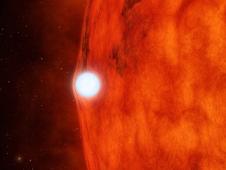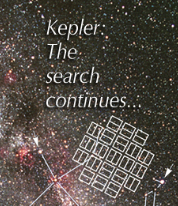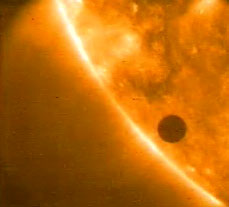There is only one planet we know of, so far, that is drenched with life. That planet is Earth, as you may have guessed, and it has all the right conditions for critters to thrive on its surface. Do other planets beyond our solar system, called exoplanets, also host life forms?
Astronomers still don’t know the answer, but they search for potentially habitable planets using a handful of criteria. Ideally, they want to find planets just like Earth, since we know without a doubt that life took root here. The hunt is on for planets about the size of Earth that orbit at just the right distance from their star – in a region termed the habitable zone.
NASA’s Kepler mission is helping scientists in the quest to find these worlds, sometimes called Goldilocks planets after the fairy tale because they orbit where conditions are “just right” for life. Kepler and other telescopes have confirmed a handful so far, all of which are a bit larger than Earth — the Super Earths. The search for Earth’s twin, a habitable-zone planet as small as Earth, is ongoing.
To read more about the search for life in the universe, visit https://www.nasa.gov/mission_pages/kepler/news/kepler20130717.html#.UebhlIXTovQ .
If you think your students would be interested in searching for habitable planets, check out the NASA Explorer Schools featured lesson, Algeraic Equations: Transit Tracks—Finding Habitable Planets. Students use algebra and Kepler’s 3rd Law to find habitable planets in other solar systems. To access this activity, visit the NES Virtual Campus.

 NASA’s Kepler space telescope has witnessed the effects of a dead star bending the light of its companion star. The findings are among the first detections of this phenomenon — a result of Einstein’s theory of general relativity — in binary star systems.
NASA’s Kepler space telescope has witnessed the effects of a dead star bending the light of its companion star. The findings are among the first detections of this phenomenon — a result of Einstein’s theory of general relativity — in binary star systems. 
 NASA is marking two milestones in the search for planets like Earth — the successful completion of the Kepler Space Telescope’s 3
NASA is marking two milestones in the search for planets like Earth — the successful completion of the Kepler Space Telescope’s 3
 As part of a series of electronic professional development experiences for educators, the NASA Explorer Schools and Learning Environments and Research Network, or LE&RN, projects are hosting a 60-minute live professional development Web seminar for educators on March 8, 2012, at 8 p.m. EST. Discover how an algebra activity called “Finding Habitable Planets” will help you teach students to use their skills to analyze NASA data. Students learn about the possibility of discovering planets in habitable zones of solar systems.
As part of a series of electronic professional development experiences for educators, the NASA Explorer Schools and Learning Environments and Research Network, or LE&RN, projects are hosting a 60-minute live professional development Web seminar for educators on March 8, 2012, at 8 p.m. EST. Discover how an algebra activity called “Finding Habitable Planets” will help you teach students to use their skills to analyze NASA data. Students learn about the possibility of discovering planets in habitable zones of solar systems.